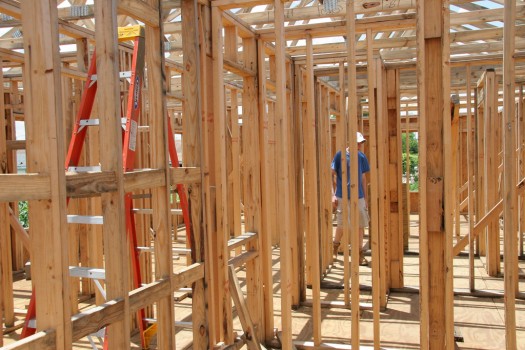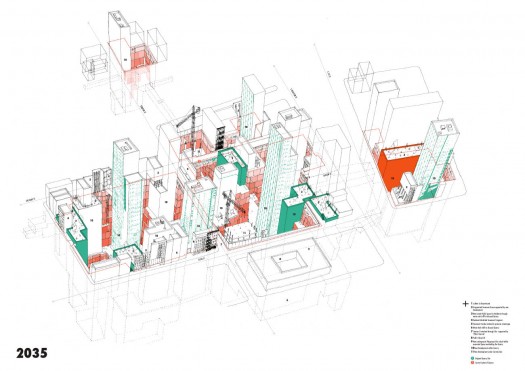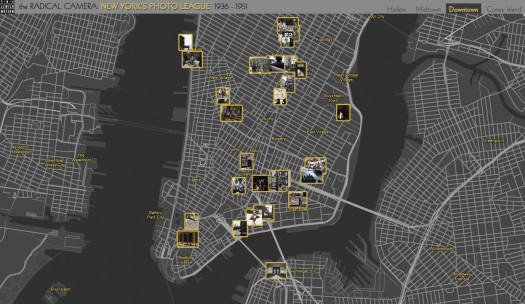
We are celebrating 15 years — and counting — of stories that are deeply researched and deeply felt, that build a historical record of what the city has been.
We are celebrating 15 years — and counting — of stories that are deeply researched and deeply felt, that build a historical record of what the city has been.

Unfinished House | via Flickr user smokingtape1717.
THE DEATH AND LIFE OF ARCHITECTURE
Is architecture a profession of luxury? Irreconcilably tied to the climbs, dips and dives of the economy, built on a tradition of 80 hour weeks for 40 hours worth of pay, the death of architecture is proclaimed every time there’s an economic downturn. The problems inherent to the discipline remain: it is a service industry that tends to cater to a very small portion of the population and an even smaller portion are able to become architects. In “The Architecture Meltdown” in Salon, Scott Timberg argues that “The downturn has shown the contradictions of a field built on wait-your-turn hierarchy, a sense of self-importance, and a culture of sacrifice.” But does a stripping down of the profession mean greater opportunities for those who remain or change the working model? According to John Cary’s article in Good, “Why ‘The Death of Architecture’ May Not Be Such a Bad Thing“, the future of architecture lies in the field of public interest design. By changing both the structure of architectural firms and the traditional fees-for-services business model, Cary argues that “the emerging field of public interest design stands on the brink of becoming a self-sustaining profession and making a tangible impact on the world.” To introduce a new issue of Architectural Record called “Building for Social Change,” Cathleen McGuigan also references Timberg’s argument when she calls out the growth of humanitarian design and activist architecture, and rightly points out that a priority shift towards social justice and equity began in earnest well before the recession.

Images: From “L.E.S. Quarry” by Rebecca Fode | via BLDGBLOG.
MINING THE LOWER EAST SIDE
In Geologic City, Elizabeth Ellsworth and Jamie Kruse looked at the often overlooked physical history of New York City, specifically its geological wealth. In Mining the Lower East Side, Geoff Manaugh, author of BLDGBLOG, highlights a project that weighs the mineral rights of New York City residents against the air rights. In a city that looks higher and higher for more value, the fictional narrative of Bartlett student Rebecca Fode plays forward a scenario in which a group of guerilla miners take advantage of the unplumbed wealth of the Lower East Side.
BROOKLYN BRIDGE PARK IS GETTING A POOL
The phased construction of Brooklyn Bridge Park is continuing on schedule. Construction has begun on the newest leg of the park, Pier 2, and it looks like DUMBO is getting its very own public pool. The Empire Fulton Ferry section, Main Street Park and Piers 1 and 6 are already open to the public. For more information about the park check out the Brooklyn Bridge Park website or check out Gothamist’s coverage of the future pool.
EVENTS and TO DOs

Screengrab of Interactive Map of The Radical Camera: New York’s Photo League, 1936-1951
THE RADICAL CAMERA
From 1936-1951 a group made up of first generation, primarily Jewish Americans formed the Photo League, bound by a loose set of socialist ideals and a belief in the power of documentary photography to capture a time and its social conditions. The League’s active years spanned the Great Depression, World War II and the very beginning of the Cold War and focused on quotidian aspects of street and city life. Check out the interactive map of the photographs in the show. The Radical Camera: New York’s Photo League, 1936-1951 is on view at The Jewish Museum until March 25, 2012.
PUBLIC SPACE & PUBLIC CONSCIOUSNESS
If 2011 was the year of the public square, society at large and the discipline of architecture are still coping with the ramifications of “the political power of physical places.” Join Michael Kimmelman, architecture critic for The New York Times at the Event Oval at Barnard’s Diana Center as he explores the role of space and our responsibilities as citizens to affect political and societal change. The event will “reimagine physical and intellectual spaces to consider ideas and actions that serve the public good.” Tuesday, March 6, 6pm, 117th Street and Broadway.
DRILLING FOR OIL ON 46TH STREET
Harkening to mid-century industry and inviting passersby to consider their own energy consumption and the processes that enable it, Josephine Meckseper’s installation of two pump jacks at The Last Lot on 46th and Eighth will be on view and in operation starting Monday, March 5th-May 6th. The pump jacks were closely modeled on those of Electra, Texas, once the oil state’s pump jack capital. More information from the Art Production Fund, or check out the coverage in The New York Times.
THE ORCHID SHOW
In a city with more vertical space than horizontal and a growing need for vegetation, there has recently been a significant amount of scientific and design research into vertical gardens. In conjunction with their annual orchid show, The New York Botanical Garden is presenting an installation by Patrick Blanc. Blanc has traveled the world as a botanist, studying the growing patterns and habits of plants all over the world. His studies have influenced his ground breaking vertical gardening techniques, allowing plants to grow and thrive in new, unusual and unexpected environments. The Orchid Show: Patrick Blanc’s Vertical Gardens is on view March 3-April 22 at the New York Botanical Garden’s Enid A. Haupt Conservatory. Click here for information and tickets, or read more in The New York Times.
The Roundup keeps you up to date with topics we’ve featured and other things we think are worth knowing about.
The views expressed here are those of the authors only and do not reflect the position of The Architectural League of New York.